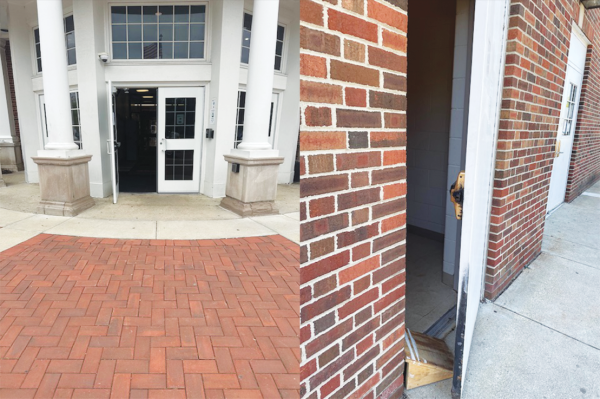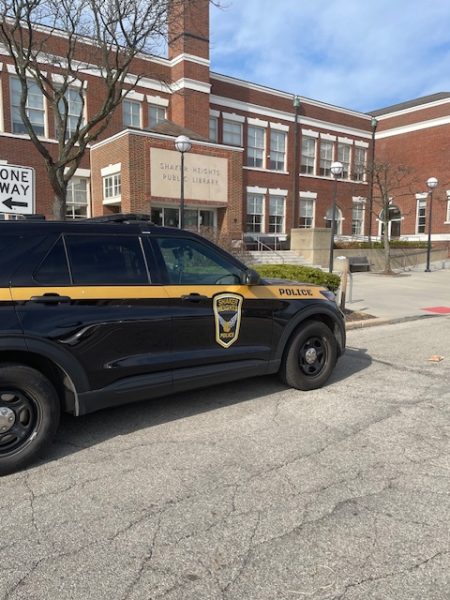Plastic Does Not Protect Us
Shaker’s ID policy will not keep students safe, contrary to what the school believes
Imagine a perfect world: All students, teachers and staff wear their IDs from the minute they enter the school to the minute they leave. When an intruder enters the building, security spots them instantly, and they are escorted out.
But that is unrealistic.
In reality, an intruding student would enter the school and walk through the hall. If stopped, the only consequence would be instruction from a security guard to put on an ID — and nothing further.
With its emphasis on the ID policy, the administration is trying to make the school look safer to outsiders looking in while ignoring calls for help from students inside the school who feel unsafe.
I, along with other female students, have shared instances of sexual harassment that we have faced with the district. We did this in hope that the school would implement a policy to make us feel safe here.
Students should not endure harassment and wait for the perpetrator to experience consequences. The district should take concrete steps to prevent an unsafe situation before it happens.
Additionally, the school has a history of not dealing with safety issues correctly or promptly.
On Sept. 10, 2013, a male student raped a female student during the school day. The administration told teachers to “avoid any conversations regarding [the rape],” according to a Sept. 2013 Shakerite story.
On Oct. 7, 2015, three Instagram direct message from an anonymous user circulated through the school and community. The first one began, “I am coming with a rifle then I will blow the b*** up.” The second stated, “I heard everyone believes it’s a joke. Ha Ha the school doesn’t know I can do it at anytime just be ready everyone in that school will have their heads blown up or die in an explosion by the end of the week.” A third message read, “Too bad there aren’t metal detectors ha ha I might go to that school ha ha ha.”
The district decided that it was still safe for students and teachers to attend school. But the administration did not tell students about what was happening. The only thing students heard was a cryptic P.A. announcement asking teachers to check their email. Chaos ensued as hundreds of concerned parents called to excuse their children.
Last year, former social studies teacher and IB Diploma Programme Coordinator Tim Mitchell was indicted on sexual assault charges for his actions 24 years ago. Mitchell pleaded guilty to a lesser charge of child endangerment and admitted taking his 16-year-old student to a Cleveland Indians game, buying her alcohol, giving her marijuana and having sex with her.
Instead of talking to Mitchell’s former students about what had happened, the district offered them some counseling. However, the offer was not announced to the student body directly. And instead of figuring out a way to best prevent Mitchell’s crime from reoccurring, Shaker simply painted over his face on a mural, hoping this would end the discomfort that students feel in the school.
Last year, the school created another blanket solution, which is reminiscent of the ID policy: the Anonymous Tip Line. Created to allow reports of harassment, the tip line is practically useless. It is deeply hidden in the Shaker website, and students do not have to disclose their identities, which compromises the validity of a report.
Shaker has a history of covering up the failures, but has capitalized on what it considers to be successes.
This year, a student held the door open for a 19-year-old male who was entering the school. In an announcement to students and faculty the next day, Kuehnle said security immediately recognized the intruder as an outsider and approached him. After running from the building, he was arrested. It was determined later that he was a felon.
But how did this work? Did security only identify him as an intruder because he was not wearing an ID? Or was it because he simply looked older than other adolescents in the building? Or unfamiliar?
I walk through the halls every day without my lanyard around my neck. I have only been asked to put it on once by an administrator, who simply continued walking rather than ensuring that I complied.
If administrators want to use their tale of catching a felon to inspire students to wear IDs, then they need to approach and reprimand every individual who walks into the building without their ID on. That is the majority of students.
If the school continues to push for more safety, then the administration needs to create change for students who do not feel safe around their peers or teachers.
A bright red lanyard and piece of plastic slung around our necks will not promote safety in the school unless the policy is properly implemented. And few threats in this building are caused by anonymous intruders, but by fellow students and adults.
Their IDs are not the problem.
A version of this article appears in print on page 32-33 of Volume 89, Issue I, published Dec. 21, 2018.
Comment using your Facebook, Yahoo, AOL or Hotmail account









